DIY Standing Desk Converter: Everything You Need To Know
- Must Read
Like most reviews sites, our editorial staff and laboratory testing expenses are partially offset by earning small commissions (at no cost to you) when you purchase something through those links. Learn More

Standing Desk Converter Or Standing Desk?
When trying to decide if a DIY standing desk converter is right for you, you first need to make sure you really want a converter instead of a full-fledged standing desk. What’s the difference? A standing desk converter is an adjustable device that you place on top of an existing desk or work surface. A standing desk, usually electric, is a full-sized desk that can be used sitting or standing.
Some reasons to pick a standing desk converter instead of a standing desk: You have a built-in desk, you have a cherished desk that you don’t want to stop using, or you don’t want to suffer the loss of storage that happens when you switch to a standing desk (though there are more and more standing desks being introduced lately with built-in or add-on drawer options).
Standing desk converters are also cheaper. In return, you’ll sacrifice some stability, desk space and ergonomic flexibility. Check out our primer on Picking Between A Standing Desk and Standing Desk Converter for a more thorough look at the pros and cons of each solution.
If it seems like you want a full standing desk instead of a standing desk converter, you can find in-depth articles on picking the right base frame, picking the right desktop and more on our DIY standing desk page.
Should You Pick A DIY Standing Desk Converter?

If you’ve made the choice to go with a standing desk converter, it’s time for the big question when it comes to DIY projects: Is it worth it? If you’re considering DIY to save money, it probably isn’t. Halfway decent standing desk converters are available for well under $200 (see our full roundup of affordable standing desk converters and our roundup of the best overall standing desk converters for more information), with really good ones generally running $300-$400. Truth be told, by the time you consider the different materials you would need, you won’t be saving much. And don’t forget that your time is valuable. Outside of strictly construction time, you should also consider all of the little “time leaks” along the way. Things like trips to the store and waiting for deliveries.
But if you’re considering a DIY standing desk converter because you want to tackle a project or get satisfaction from building something with your own hands that’s fully customized to your own anthropometry, going the DIY route might be perfect.
It might also make sense to try one of the cheap hacks below to see if the general feel of a standing desk converter feels good to you. Just remember these hacks will only give you a rough idea of what the real thing would be like. The full ergonomic adjustment range of a commercially sold active workstation is very difficult to match on your own.
And remember to consider stability. Many of these setups won’t have good stability, which is just a fact of going with a cheap solution. If you tend to pound hard on your keyboard or have heavy LCDs suspended on a monitor arm, minimizing shake in your workstation is going to be essential to a good user experience. Fully consider the ergodynamics of an active workstation so you don’t remove some physical problems by standing only to add others by working on an unstable surface.
If You Want A Standing Desk Converter And You Want It DIY
If you’ve picked a standing desk converter and decided DIY is right for you, you can go with a fixed-height or adjustable-height build. Even though they’re a fixed height option, we’ve broken out some DIY standing desk converter hacks into a separate section since they’re on a different scale in terms of cost (time and money).
Fixed-Height DIY Standing Desk Converter

Along the lines of the Standee Bamboo Sit Stand Workstation we’ve reviewed, a fixed-height standing desk converter is an object you place on your existing desk (or piece of furniture) to raise your workstation height. Since these are relatively simple structures, it’s not an involved DIY project and you should be able to make them look good with your existing desk and office.
The downside is that this essentially fills the same role as some of the simple hacks we have listed below. It isn’t adjustable and therefore it can become cumbersome to change from standing back to sitting several times a day. Standing all day isn’t much better than sitting all day from a health and ergonomics stand point. Doing anything for too many hours a day takes a toll on your body.
Standing all day may sound great to the office worker who has been sentenced to the chair for hours-on-end, but it can cause maladies like foot pain, low back pain and varicose veins, so switching postures back and forth several times a day is always best for your body.
Adjustable DIY Standing Desk Converter – With or Without a Counterbalance?
The easiest way to make a DIY adjustable standing desk converter would be something akin to the Readydesk 2 that has shelves you can manually move up and down. Even though this type of converter is ergonomically better than a fixed-height option, it’s likely to suffer elsewhere with stability, weight capacity and work surface area. It has larger height setting increments and can’t be fine tuned to your exact ideal elbow angle like a commercial unit with a counterbalance mechanism can.
The issue with a DIY adjustable standing desk converter is that you’re almost surely going to spend much more than you would by purchasing a unit from a commercial manufacturer if you want nice features like a gas piston or spring counterbalance lifting mechanism. Having a counterbalance will make it easier to lift all your gear up and down along with the desk surface every time you change position.
Particularly if you suffer from low back or shoulder pain, having a counterbalance to assist you in lifting your workstation while leaning forward is going to be a high priority. And these are not easy to DIY without a lot of design, component hunting and assembly time.
DIY Standing Desk Converter Hacks

From a cardboard box masquerading as a cardboard standing desk converter to simply putting your laptop on a tall piece of furniture, these options have the least investment as far as money and time, but they demand the largest compromises in ergonomics, stability and adjustability.
This solution is for people who want to stand while they work today and generally comes down to one question: What can I use as a standing desk that I can just move my laptop over to when I’m tired of sitting?
You can look online and find thousands of different objects to put your laptop on to raise your workstation height, but these are a few of the most common we’ve seen.
Stack of books or box
If you have an existing desk or table you’re working on, you can simply put a stack of books or a box on it to raise your work surface and standing while working. The drawbacks are clear: It won’t be very stable and you probably won’t have space for your mouse, much less any work papers.
Dresser or bookshelf
It doesn’t get any simpler than this. You find a tall piece of furniture and put your laptop on it. The cost should be zero, but you’re likelier than not to have a hard time getting the correct ergonomics.
IKEA hack
There are a number of IKEA standing desk hacks out there. All of them consist of some piece of cheap IKEA furniture, like an end table, that you set on top of your desk or table to raise your work surface. It has the same issues we’ve seen from all of these hacks: Stability and ergonomics will suffer. (While we’re on the subject, IKEA does sell very inexpensive sit-stand desks, like the —Bekant and Idasen—and a non-adjustable standing desk called the Knotten, but they’re very poorly rated by our expert reviews team.)
Need more help with your office setup? Read our 10 Ways to Improve Your Office Ergonomics and our in-depth primer on the Differences Between Ergonomics and Ergodynamics. Don’t forget to sign up for our free newsletter.

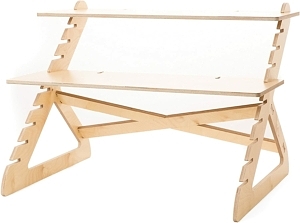
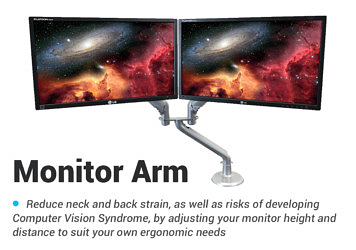
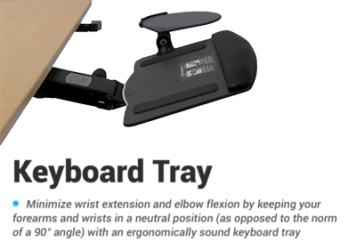
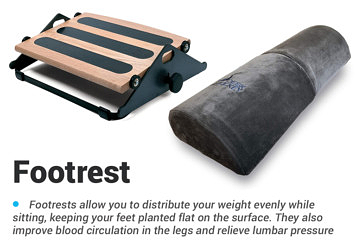
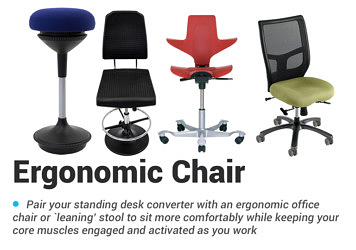
0 Comments
Leave a response >